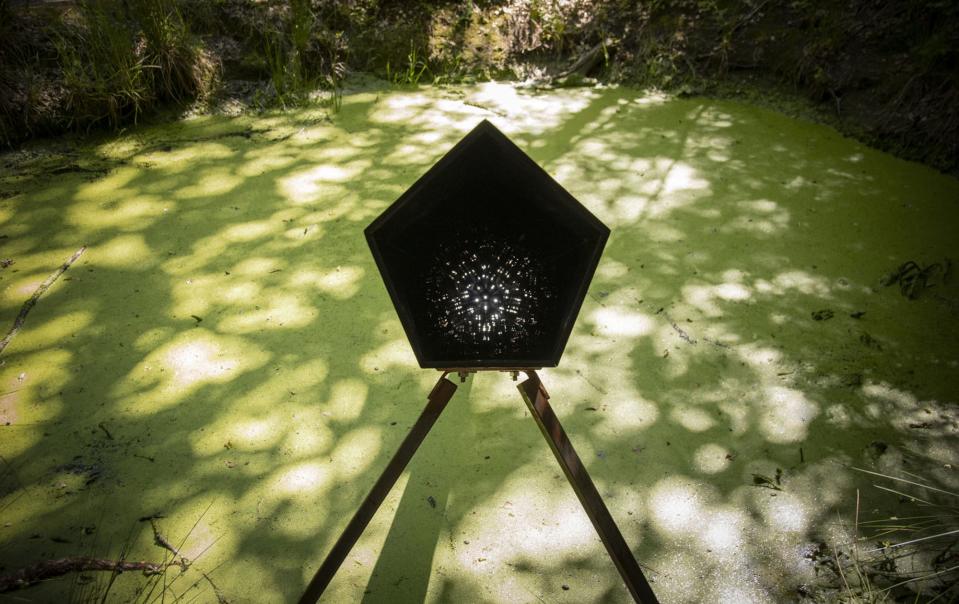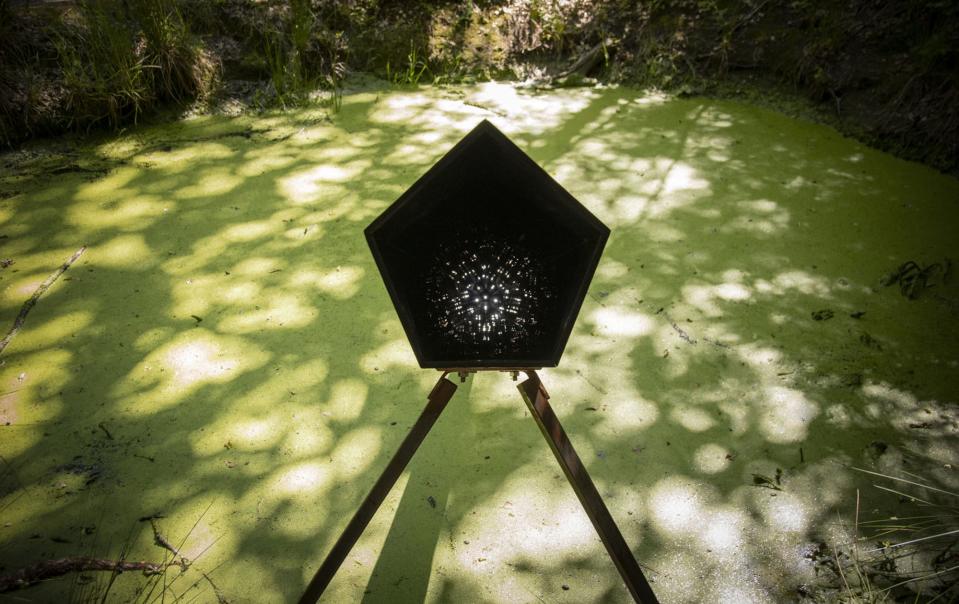Creating electricity from a bog in a bomb crater
They might not deliver as much electricity as solar panels and windmills, but Geobacter have an extra talent. The microorganisms can purify water by consuming waste, then excrete electrons we can harvest as energy. To show that in action, Artist Teresa van Dongen has created an installation called Mud Well that illuminates, as it were, their inner workings.
Geobacter thrive in the mud banks of rivers and ponds, but with Mud Well, van Dongen found an unusual man-made source. She discovered that a water-filled bomb crater in the Dutch countryside had a thriving ecosystem, "one of the strongest she has ever encountered," according to her website.

The piece, commissioned by the Oerol festival and Atelier NL, consists of a telescope-like gadget with one end submerged in the Geobacter-rich soup. At the other is a public viewer with a light display powered solely by the organisms. As the lights pulse and oscillate, you get a sense of the Geobacter in action as they feast on waste. Light production and viewing depends on the time of day, and "from sunset you experience the light artwork in a completely different way," the Oerol festival noted.
The artist has worked with the bacteria in the past on projects like Spark of Life, but those required the occasional shot of vinegar as fuel. Mud Well, though, is self-sustaining like solar or wind and could theoretically power the display forever. That's because "there is always an abundance of organic material and that it is quite closed off from various other influences like the sea or rivers," according to the project's description.
van Dongen's background in both biology and design lends her the artistic and technical expertise to create such a piece. "I have, over the years learned a lot, made great improvements in the hardware of the technology and created my own type of bacteria battery," she told Dezeen.
The piece evokes the idea of extracting energy from the land with the least impact possible, unlike solar farms or wind turbines. "I keep working with bacteria because I think there is a real perspective of eventually using their energy in our daily life and homes," she said. "The electrode is now functioning optimally to support the bacterial life and harvest the energy of the electro-active bacteria."


